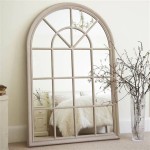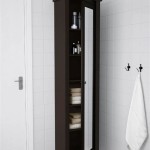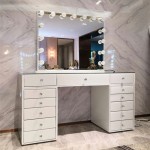How to Paint on Mirrors: A Comprehensive Guide
Painting on mirrors presents a unique and rewarding decorative opportunity. Mirrors can transform from simple reflective surfaces into personalized works of art, adding character and visual interest to any space. This article provides a detailed guide on how to successfully paint on mirrors, covering preparation, material selection, painting techniques, and preservation of the painted surface.
Before embarking on a mirror-painting project, it’s crucial to acknowledge the distinctive challenges involved. Unlike canvas or paper, mirrors have a slick, non-porous surface that requires specific preparation and paint types to ensure proper adhesion and prevent peeling or chipping. Furthermore, the reflective nature of the mirror impacts the way colors appear, necessitating careful consideration of color choices and application techniques.
Failing to properly prepare the mirror surface or using inappropriate paints can result in unsatisfactory results, including uneven paint application, poor adhesion, and a compromised final appearance. Therefore, meticulous attention to detail throughout the process is essential for achieving a durable and visually appealing outcome.
Preparing the Mirror Surface
Surface preparation is arguably the most critical step in painting on mirrors. A clean, properly prepared surface is vital for ensuring optimal paint adhesion and longevity. Any dirt, grease, or residue present on the mirror will hinder the paint's ability to bond effectively, leading to potential flaking or peeling over time.
The first step is to thoroughly clean the mirror with a glass cleaner. Spray the cleaner liberally onto the surface and wipe it down with a lint-free cloth. Avoid using paper towels, as they can leave behind fibers that will interfere with the paint's adhesion. Repeat this process until the mirror is completely free of any visible dirt or smudges.
Following the initial cleaning, it is advisable to further degrease the surface. This can be achieved by wiping the mirror down with isopropyl alcohol. This removes any lingering oily residue that may not have been addressed by the glass cleaner. Ensure the alcohol evaporates completely before proceeding to the next step.
To enhance paint adhesion, consider lightly etching the area of the mirror you intend to paint. This can be accomplished using a fine-grit sandpaper (around 400-600 grit). Gently sand the surface in a circular motion, applying minimal pressure. The goal is not to create deep scratches, but rather to slightly roughen the surface, providing the paint with a better grip. After sanding, remove any dust particles with a clean, dry cloth.
An alternative to sanding is the application of a primer specifically designed for glass or non-porous surfaces. These primers create a bonding layer that facilitates paint adhesion. Apply the primer according to the manufacturer's instructions, ensuring even coverage. Allow the primer to dry completely before proceeding with the painting process.
Finally, masking off the areas you do not want to paint is crucial for achieving clean lines and defined shapes. Use painter's tape to carefully outline the design, pressing the tape firmly onto the mirror surface to prevent paint bleeding underneath. Ensure the tape is securely adhered, especially along edges and corners. The quality of the painter’s tape impacts the sharpness of the resulting lines. Invest in high-quality tape designed for delicate surfaces to minimize the risk of paint bleed.
Selecting the Right Paint
The choice of paint is paramount to the success of a mirror-painting project. Not all paints are created equal, and selecting the appropriate type is crucial for achieving durable and visually appealing results. Factors to consider include adhesion properties, durability, color opacity, and the desired aesthetic effect.
Acrylic paints are a popular option for painting on mirrors due to their versatility, availability, and relatively quick drying time. However, standard acrylic paints may not adhere well to the slick surface of a mirror without proper preparation. For best results, opt for acrylic paints specifically formulated for glass or multi-surface use. These paints contain additives that enhance adhesion and durability.
Enamel paints offer superior durability and adhesion compared to standard acrylics. They create a hard, glossy finish that is resistant to scratches and chipping. Enamel paints are particularly well-suited for projects that require long-lasting results, such as decorative mirrors that will be frequently handled or exposed to cleaning agents. However, enamel paints typically require longer drying times and may emit stronger odors than acrylic paints.
Glass paints are specifically designed for use on glass surfaces, including mirrors. They offer excellent adhesion, vibrant colors, and a translucent or opaque finish, depending on the specific product. Glass paints are available in a variety of formulations, including air-dry and bake-on options. Bake-on glass paints require heat-setting in an oven to achieve optimal durability and resistance to washing. Ensure the mirror being painted is oven-safe if this is the chosen method.
Spray paints can also be used on mirrors, but careful selection is essential. Choose spray paints that are specifically formulated for glass or multi-surface use. Ensure proper ventilation when using spray paints, and apply thin, even coats to prevent drips and runs. Multiple light coats are preferable to a single heavy coat for achieving a smooth and uniform finish. Test the spray paint on a hidden area of the mirror, or a similar glass surface, before committing to the entire project. This allows verification of adhesion and color accuracy.
Regardless of the paint type selected, it is advisable to use a paint sealant or varnish after the paint has completely dried. This provides an additional layer of protection against scratches, fading, and environmental factors. Choose a sealant or varnish that is compatible with the chosen paint type and apply it according to the manufacturer's instructions.
Applying Paint and Techniques
Once the mirror is prepared and the appropriate paint is selected, the painting process can begin. The application technique will depend on the desired aesthetic and the type of paint being used. Whether using brushes, sponges, or spray paint, a methodical approach is essential for achieving professional-looking results.
When using brushes, opt for high-quality brushes with soft bristles to minimize brushstrokes. Load the brush with a moderate amount of paint, avoiding excessive dipping, which can lead to drips and uneven application. Apply the paint in smooth, even strokes, following the contours of the design. Overlapping strokes slightly will help to blend the paint and create a seamless finish. Clean the brushes thoroughly after each use to prevent paint buildup and maintain their performance.
Sponges can be used to create textured effects or to apply paint in a more diffused manner. Dampen the sponge slightly before dipping it into the paint. This helps to prevent the paint from being absorbed too quickly into the sponge and allows for more even distribution. Apply the paint to the mirror surface using a gentle stippling or dabbing motion.
When using spray paint, it is crucial to work in a well-ventilated area and to protect surrounding surfaces from overspray. Hold the spray can approximately 8-10 inches away from the mirror surface and apply the paint in thin, even coats. Move the can in a smooth, consistent motion, overlapping each pass slightly. Avoid holding the can too close to the surface or spraying too much paint in one area, as this can lead to drips and runs. Allow each coat to dry completely before applying the next.
For intricate designs, consider using stencils to create precise shapes and patterns. Stencils can be purchased pre-made or created using craft materials like cardstock or acetate. Secure the stencil to the mirror surface using painter's tape or stencil adhesive. Apply the paint using a brush, sponge, or spray paint, being careful not to allow the paint to bleed underneath the stencil. Remove the stencil carefully while the paint is still slightly wet to prevent chipping or peeling.
To create a reverse-painted effect, paint the design on the back of the mirror. This technique protects the painted surface from damage and creates a unique visual depth. Ensure the back of the mirror is thoroughly cleaned and prepared before painting. The design will appear reversed on the front of the mirror, so plan accordingly.
Allow the paint to dry completely according to the manufacturer's instructions. Drying times can vary depending on the type of paint, the application thickness, and the ambient temperature and humidity. Avoid touching or handling the painted surface until it is fully dry. Once the paint is dry, carefully remove the painter's tape, pulling it away at a 45-degree angle to prevent chipping the paint. If any paint has bled underneath the tape, use a craft knife or razor blade to carefully score the edge and remove the excess paint.
After the paint is fully dried, apply a protective sealant or varnish to enhance durability and prevent scratches and fading. Choose a sealant or varnish that is compatible with the chosen paint type and apply it according to the manufacturer's instructions. Allow the sealant or varnish to dry completely before displaying or handling the painted mirror.

Painting On Mirrors An Easy Step By Guide

How To Paint A Mirror Meg Del Design Furniture Diy Blog

How To Paint On Mirrors

Acrylic Painting On Mirror By Cristina Barretta Painted Art Frames

How To Spray Paint A Mirror Step By Guide

Mirror Painting Painted Art Aesthetic

How To Paint A Mirror Frame Gold Easily In Two Steps

How To Spray Paint A Mirror Step By Guide

Painting With Mirrors Simple Process Art One Time Through

How To Paint A Mirror With Pictures Wikihow








